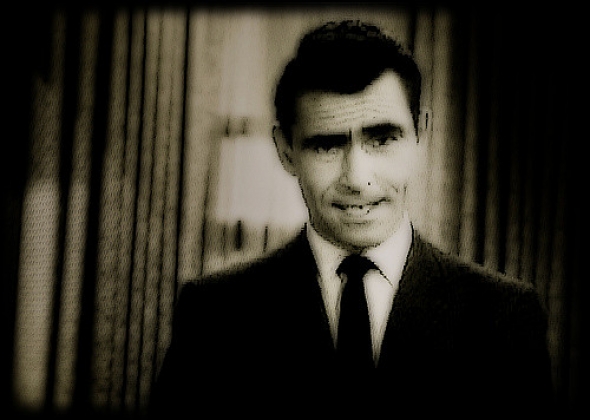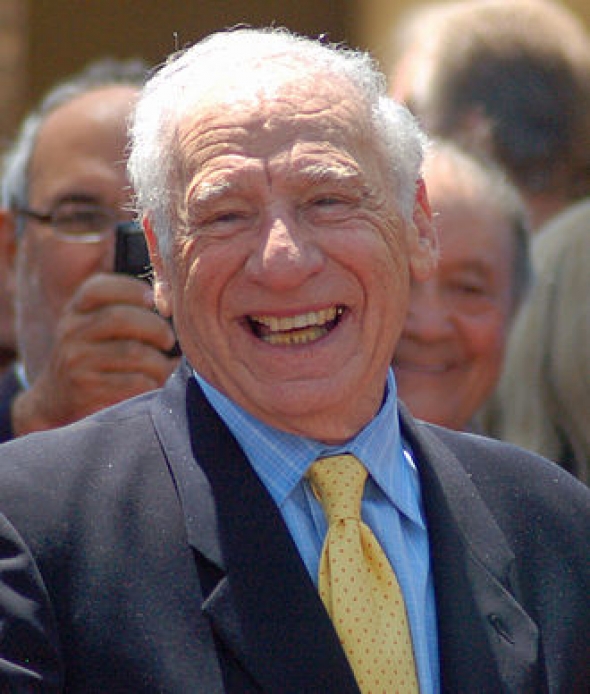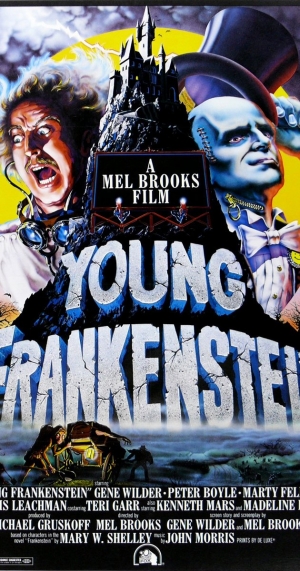
“You are traveling through another dimension, a dimension not only of sight and sound but of mind. A journey into a wondrous land of imagination. Next stop, the Twilight Zone!”
Rod Serling intoned these words at the start of each season three episode of his famed series, and this narration became the lasting legacy of The Twilight Zone. In 1994, nearly 20 years after Serling’s death, he became an anomalous presence at Walt Disney World, anomalous because The Walt Disney Company possessed no ownership interest in the program. They had no connecting ties of substance with Serling, either. A company built and sustained by its internal intellectual properties sought a new enterprise that would feature an outsider’s storyline. It was a daring change for Disney, and the results were universally positive.
The Twilight Zone: Tower of Terror is generally regarded as one of the greatest attractions in Disney history, and that means it’s one of the best rides in the history of theme parks. You, the readers of this site, have voted it the best theme park attraction in the world. Despite its track record of sustained excellence, the ride is going away forever at Disney California Adventure. Its long-term fate at Walt Disney World is also in doubt.
And it’s all your fault.
Well, it is, but the explanation as to why is convoluted and novel. Guests at theme parks are always seeking out the next big thing. Pop culture at large functions the same way. We as a people grow bored of what’s known and established. We seek new ideas, concepts, and stories to excite us. We take for granted the bird we have in hand, overvaluing the two in the bush. Due to our constant quest for new and different, theme park vendors like Disney must operate under the constant strain of unearthing the next big thing. When they find something new and popular, they have to go all-in on their discovery.
No, I’m not talking about Frozen here, although the same logic applies. Instead, I’m talking about a science fiction franchise that Disney acquired in a multi-billion transaction. It’s not Star Wars, either. It’s a tale involving a plucky band of misfits who come together to, well, guard a galaxy. In 2014, audiences worldwide fell in love with these unlawful nomads forced into acts of heroism.
Disney took notice of the soaring value of one of their properties. The ascension of this IP allowed them to consider alternatives for one that they didn’t own, and the rest is tragic theme park history. What follows is the tale of the Twilight of the Twilight Zone Tower of Terror and the corresponding rise of the Guardians of the Galaxy. This story will reveal just how fickle Disney can act when a huge financial outlay is in play and just how much they want their own properties to comprise the entirety of their theme parks. It’s not a happy tale. Then again, Twilight Zone episodes aren’t known for their happy endings.
Binge watching to glory
Image: CBS
Our story starts with a group of Disney employees and a television. Their job title that week was one that many of us have done for free. These cast members binged their way through 156 episodes of The Twilight Zone. It’s great work if you can get it.
Perhaps I should back up a step to explain what they were doing. During the early days of Disney-MGM Studios, the third gate at Walt Disney World suffered from a fatal flaw. It lacked the volume of attractions needed to entice theme park tourists to visit. From the day it opened for the first time in 1989, guests demonstrated a noted lack of enthusiasm for the concept of a movie-based theme park (even if guest numbers were initially high). On top of that, after a slow start the following year, rival Universal Studios Florida soon proved to have a more impressive selection of thrill rides.
Then-CEO Michael Eisner was furious about the park’s performance. He’d spent years brokering deals to bring the park to fruition. It was intended as his stamp on the Disney brand, his legacy that would last for decades after he’d left the company. Instead, it was derisively described as a half-day park. Frankly, that was too generous. Spending half a day at Disney-MGM Studios could feel like an eternity since there was so little to do. The park was in danger of failing, and everyone involved understood this irrefutable fact.
What Disney-MGM Studios needed was a Space Mountain, an It’s a Small World, or a Pirates of the Caribbean. The third gate lacked an attraction that was immediately recognizable to potential vacationers, one that would make me them feel compelled to visit the park. Imagineers got to work on developing this new ride experience.
It all started with Mel Brooks…
Image: Wiki Commons
A Disney dream team started the process. Involved with the earliest blueprints were Disney Legend Marty Sklar, Imagineer C. McNair Wilson, Eisner the CEO, and director Mel Brooks. Why was Brooks there? That’s an odd piece of Disney folklore and Hollywood history.
Eisner’s previous career as an agent and studio boss had given him access to some of the most talented players in Hollywood. He’d developed a strong relationship with Brooks when the latter man read a screenplay provided to him by one of his former assistant directors. Brooks loved this dramatic story and asked Eisner, the head of Paramount Pictures at the time, to provide the resources to make the film.
For his part, Eisner was extremely confused at this request. The world knows Brooks for his goofy comedies. The feature film he wanted to make was totally humorless. Eisner justified his reputation as a believer in talent by gambling $5 million on the project. He believed in Brooks as a content creator so much that he agreed to bankroll the film, which is one you may have heard of: The Elephant Man.
The point is that Brooks and Eisner had a strong working relationship and healthy respect for one another. Once Eisner had established his movie studio theme park premise, he needed something to distinguish it. The CEO knew all too well that Universal Studios Florida would arrive in 1990, only a year after Disney-MGM Studios. If their attractions were better, Walt Disney World would seem damaged. The more pressing matter for Eisner on a personal level was that his legacy would be in question. His ego on this subject was a contributing factor in many of his decisions as head of Disney. That’s why his later fall from grace at the company is the all the more fitting.
Before his career collapse, Eisner prioritized Disney-MGM Studios. It was his theme park baby. He asked Brooks to come and brainstorm with two of the best Imagineers still on the payroll. From the beginning, Eisner wasn’t averse to a tie-in to an intellectual property outside the Disney collective. For all its storied cinematic classics, horror wasn’t really the company’s thing. That’s something that has changed a bit since the 1980s, but it was an accurate summation at the time.
Image: 20th Century FOX
Brooks loved the idea of one of his iconic tales becoming a signature attraction at Walt Disney World. He even pointed out that he had a natural fit. Young Frankenstein satisfied Disney’s goal of a gothic horror tale. It was also silly enough that it could remain child-friendly. At the time, Eisner wasn’t married to the idea that Disney-MGM Studios had to cater to children. He was also savvy enough to acknowledge that burning that bridge needlessly would look like a massive miscalculation to company outsiders. History indicates that Eisner wasn’t averse to picking fights for the wrong reasons. He didn’t actively seek them out, though.




Comments
A few other factors that are involved in all of the changes. The business model of having other corporations sponsor and/or underwrite Disney attractions is failing. Originally each of the pavilions at Epcot had a corporate sponsor that underwrote a large portion of the operational expenses in exchange for the advertising value and ability to entertain corporate guests at the attraction. Most of the attractions still have corporate lounges. Today, most of the new attractions are being built by Disney itself without outside corporate participation. It thus becomes even more important for each new attraction to create enough admission and merchandising sales to cover its capital and operational costs.
Secondly, prior to the Lucasfilm and Marvel acquisitions, Disney had tried to do science fiction on their own on several occasions, largely failing (The Black Hole and Atlantis: The Lost Empire, anyone?). I don't necessarily think a Science fiction attraction is out of place in Future world, provided it gets grounded in and connected to the technology of today.
Finally, Walt's goal was to put the guest into the story. Universe of Energy never really did that. You ride through and past the story, if the tableaus can even be called that, never losing sight of the fact that you're in a purple plastic train while doing it. It is also 1980s technology, leading to the need for the overly long preshow and post-show films, the latter of which I don't think anyone has sat through in 20 years. I understand that this is required to recharge the batteries on the ride vehicles. While this was impressive 35 years ago, anyone who has seen Jurassic Park or even the Animal Kingdom Dinosaur ride leaves decidedly underwhelmed.
Another major factor is that the Hollywood Boulevard area of DCA is rumored to become a Marvel themed land, ToT doesn't fit but Guardians is a perfect fit. It's just rumor at this point but if it happens ToT had to be changed to fit thematically.
I was just thinking how ToT fits in with the Hoolywood Blvd feel but Guardians wouldn't. Didn't they just revamp the Hollywood Blvd just a few years ago? I would be sad to see it go since I love how DCA paid tenure to he early years of Walt. Maybe they could just change the back portion.
My problem with this article is the pretense that Tower of Terror is one of the premiere rides in Disneyland Resort. I went there recently, it had almost no wait and was, frankly, terrible. Disney World's Tower of Terror is a classic, California Adventure's is a pale imitation that should be repurposed. Good riddance.
You're right, it was voted one of the best theme park rides, thats why they aren't changing it...they're changing the watered down store brand version in California. Walt would be rolling in his grave if they passed on a in house property and instead continued to use an out of house property.